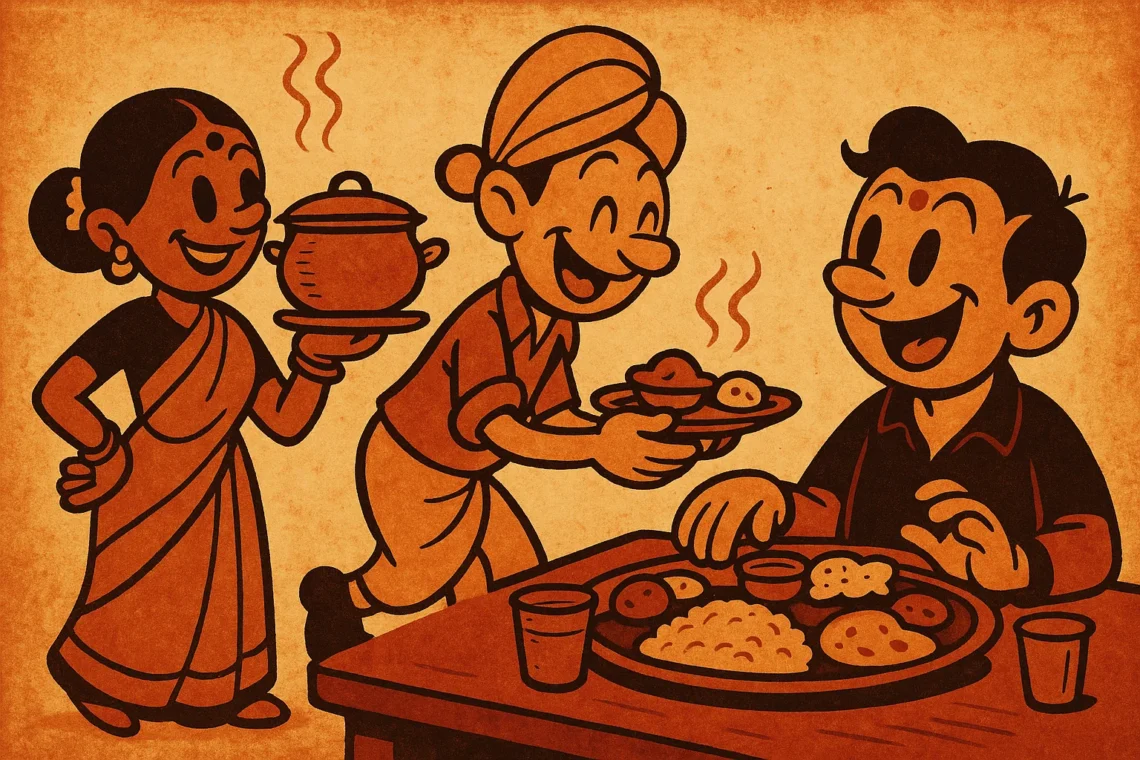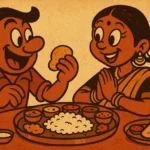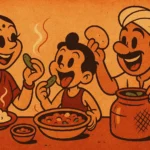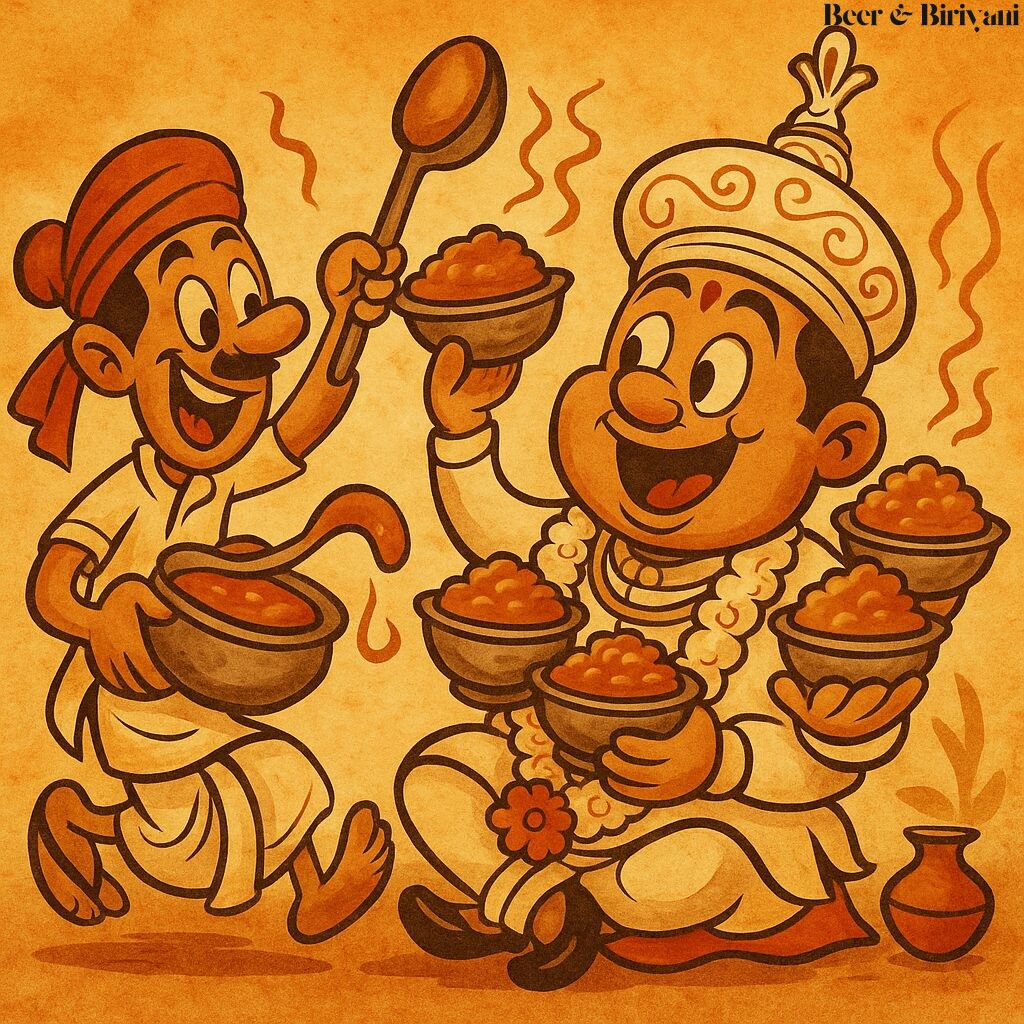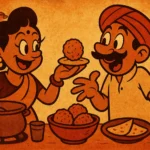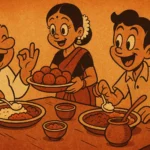In most Indian homes, meals aren’t just eaten — they unfold. Plate by plate, spoon by spoon, dish by dish, a rhythm emerges. And if you’re paying attention, you’ll notice something deeper at play: it’s not just *what* you serve. It’s *when* you serve it. Because in our kitchens, order is a kind of unspoken etiquette. A choreography that balances heat, texture, digestion, and, somewhere beneath it all, love.
Growing up, I never questioned it. The dal never arrived before the dry sabzi. The pickle sat to the left. Rice came last, always. And the sweet dish? Don’t even think of touching it until someone older had signaled it was time. This wasn’t about formality. It was about flow. A logic so intuitive that it took me years — and one awkward attempt at hosting my first dinner in Austin — to realize just how structured it all was back home.
The Architecture of a Thali
The traditional Indian thali is more than just variety on a plate. It’s a system. The dry sabzi comes first — something fibrous, spiced, to activate the taste buds. Then a moist curry, warm and comforting. Then the dal, the soul of the meal, poured over rice only after a few bites of roti. The chutney cuts through the richness. The papad adds crunch. The pickle brings fire. And finally, the sweet dish — to cool the heat, to end on softness.
In South Indian homes, the sequencing can feel like music. Sambar opens the concert — bold and earthy. Rasam follows — tangy, sharp, a palate cleanser. Then curd rice — the closer, the lullaby. You can skip things, adjust quantities, but the order? The order holds. And when someone breaks it — say, reaches for curd rice before rasam — the elders notice. They don’t scold, but you feel it in their glance. Like you’ve read the last page of a novel before starting the first.
It’s Not Just About Taste
There’s Ayurveda behind it, of course. Dry before wet. Bitter before sweet. Coolants at the end. But it’s also cultural. It’s emotional. Think about weddings, where the order of the meal reflects tradition more than abundance. Banana leaf lunches served clockwise: salt, pickle, kootu, curry, sweet, payasam. The servers move like clockwork. No one explains it, but everyone follows.
Even at home, the order reflects care. When my mother served food, she never just dumped everything onto a plate. She arranged it — sabzi first, then dal, then rice — pausing between each, giving space for appreciation. It was her way of saying, “This matters.” Not just the food, but the pace. The respect for sequence. The recognition that each flavor deserves its own moment.
What I Learned From Serving Wrong
When I cooked my first full Indian meal for friends in the U.S., I made all the right dishes. Aloo gobi, rajma, pulao, raita, and gulab jamun. But I served everything at once. Buffet-style. Paper plates. People mixed everything together, poured rajma over rice before touching the aloo, spooned raita next to pickle, and went for dessert midway through the meal. And while no one complained — they loved it, in fact — something felt off. Like I had skipped the story and only shown them the ending.
Since then, I’ve started serving with more intention. Not rigidly, but with rhythm. Rice comes warm, after the curries. Sweet dish only after the table has quieted. Papad last-minute, so it doesn’t wilt. Not to control the meal, but to honor it. Because when the order is right, the meal sings.
The Unspoken Generosity of Sequence
Order isn’t about rules. It’s about respect. About guiding someone through a meal in a way that builds — from spice to cool, crunch to melt, sharp to soft. It’s about noticing when someone needs rasam instead of more curry. About waiting for the right moment to offer something sweet. About knowing that a small bowl of curd can say, “Rest now. You’ve had enough.”
So yes, the order you serve the dishes matters. Not because it’s fancy. Not because it’s tradition. But because it transforms a plate of food into something more — a story, a memory, a slow unfolding of care, one spoonful at a time.
Born in Mumbai, now stir-frying feelings in Texas. Writes about food, memory, and the messy magic in between — mostly to stay hungry, sometimes just to stay sane.

